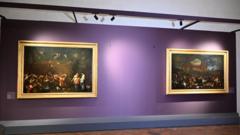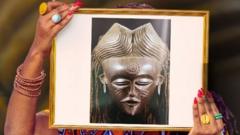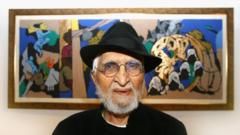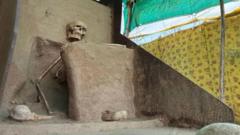The Framji Dadabhoy Alpaiwalla Museum, dedicated to the Zoroastrian Parsi community of India, showcases a rich history through artefacts, garments, and replicas of sacred sites, shedding light on a culture that is rapidly diminishing.
Discovering the Rich Heritage of India's Parsis: A Journey Through the Framji Dadabhoy Alpaiwalla Museum

Discovering the Rich Heritage of India's Parsis: A Journey Through the Framji Dadabhoy Alpaiwalla Museum
A newly renovated museum in Mumbai invites visitors to explore the ancient Parsi community's history through intriguing artefacts and exhibits.
The Framji Dadabhoy Alpaiwalla Museum lies discreetly tucked away in a lane at the southern end of India's bustling financial hub, Mumbai. This museum is dedicated to preserving the history and rich cultural legacy of one of the world's oldest religious communities, Zoroastrianism, and its followers known as the Parsis. Once numbering in significant figures, the Parsi community now counts between 50,000 to 60,000 individuals, primarily residing in India after fleeing religious persecution centuries ago.
Despite their considerable contributions to India's cultural and economic landscape, much of the Parsi story remains untold to the broader public. However, curator Kerman Fatakia hopes that the recently renovated museum will change that narrative. "We want to encourage exploration of the history, culture, and traditions of the Parsi community through our rare collections,” she explains.
Among the treasures on display are historical artefacts such as cuneiform bricks, terracotta pots, and coins from long-lost civilizations including Babylon and Mesopotamia, dating back 4000-5000 BCE. These objects highlight the significant legacy of the Zoroastrian Iranian kings of the Achaemenid, Parthian, and Sasanian dynasties. Notably, a replica of the infamous "Cyrus Cylinder," inscribed with rights bestowed by the Persian king, Cyrus the Great, stands as an emblem of ancient human rights.
Maps illustrating the migration routes of Zoroastrians fleeing persecution over centuries are also featured, alongside treasured collections from prosperous Parsis who thrived during the 19th century through commerce in tea, silk, cotton, and opium with China. A range of elegantly designed Parsi sarees influenced by global trade routes also adorn the displays.
Among the museum's captivating replicas are the Tower of Silence and a life-size fire temple, which provide a rare glimpse into sacred Parsi rituals. The Tower of Silence is used by Parsis to return their deceased to nature, while the fire temple serves as a space of worship typically reserved for the community. Both replicas serve to demystify these practices, as non-Parsis are traditionally restricted from entering such sacred spaces.
Overall, the Alpaiwalla Museum, originally established in 1952 and recently modernized, encapsulates the profound history of the Parsis. With informative guided tours and well-presented exhibits, it is a treasure trove of history, eager to share the unique narrative of the Parsi community with Mumbai's residents and visitors from around the world. "It's a small museum but packed with history," remarks Fatakia, emphasizing its significance as a learning hub for people everywhere.




















